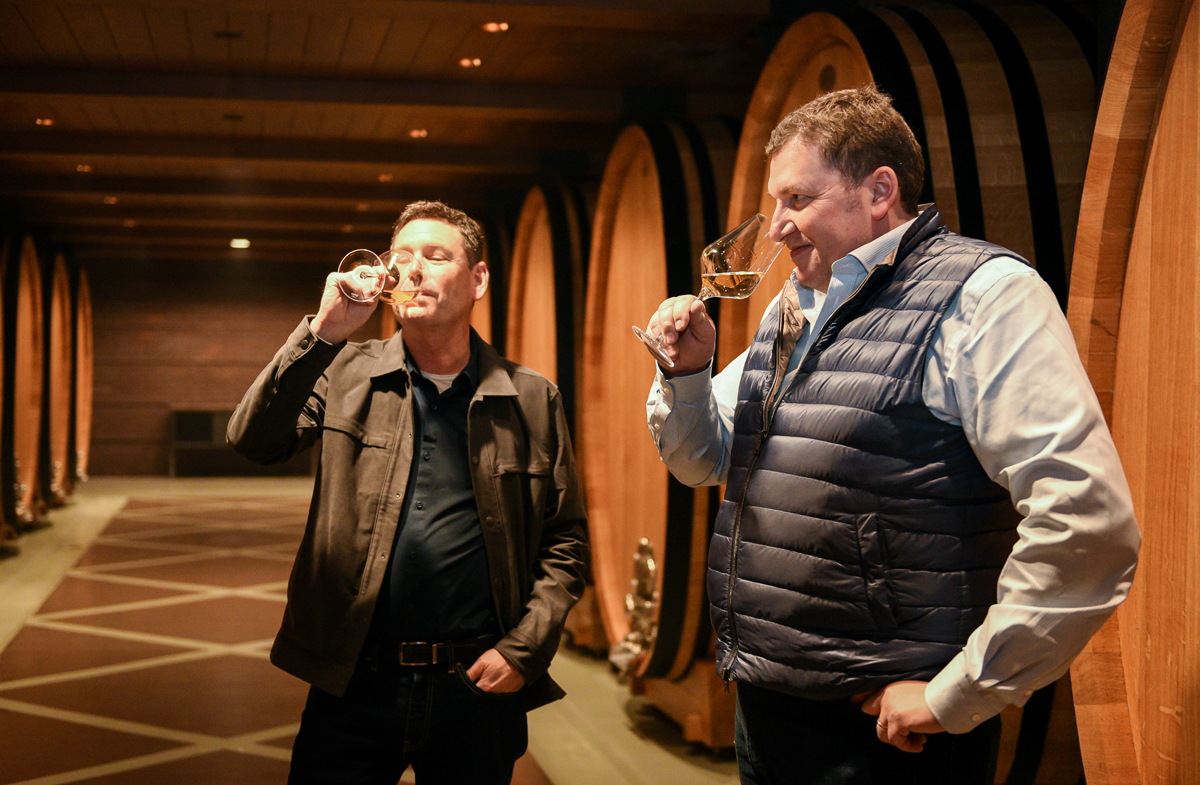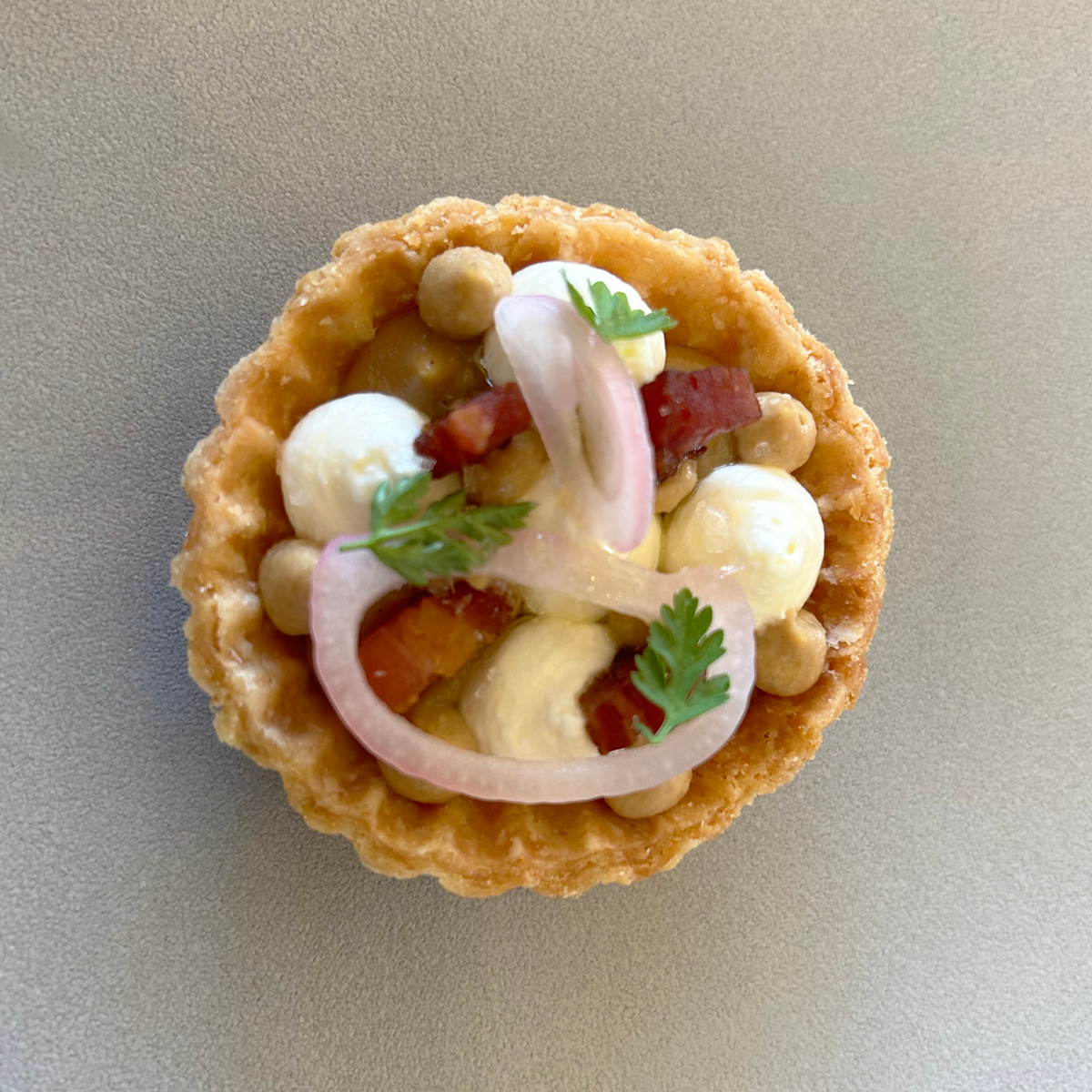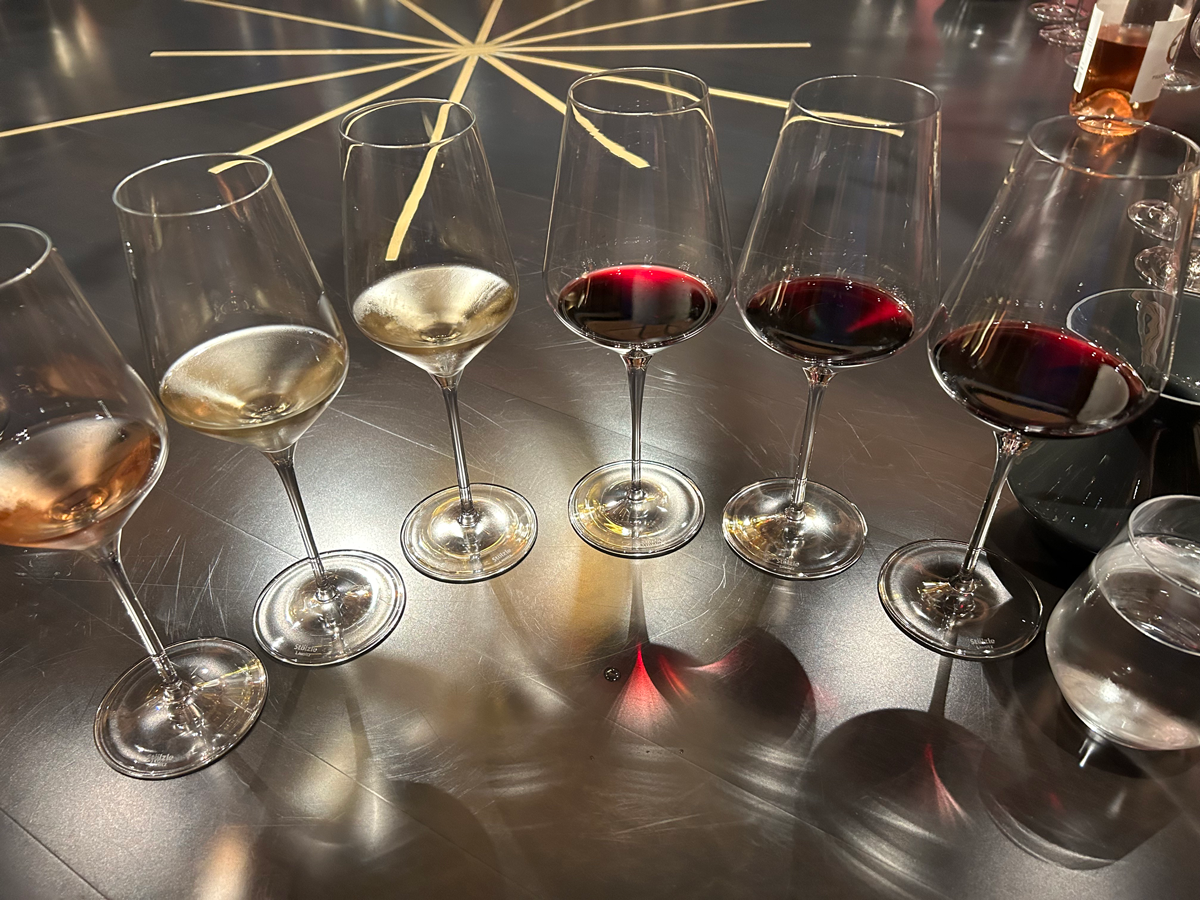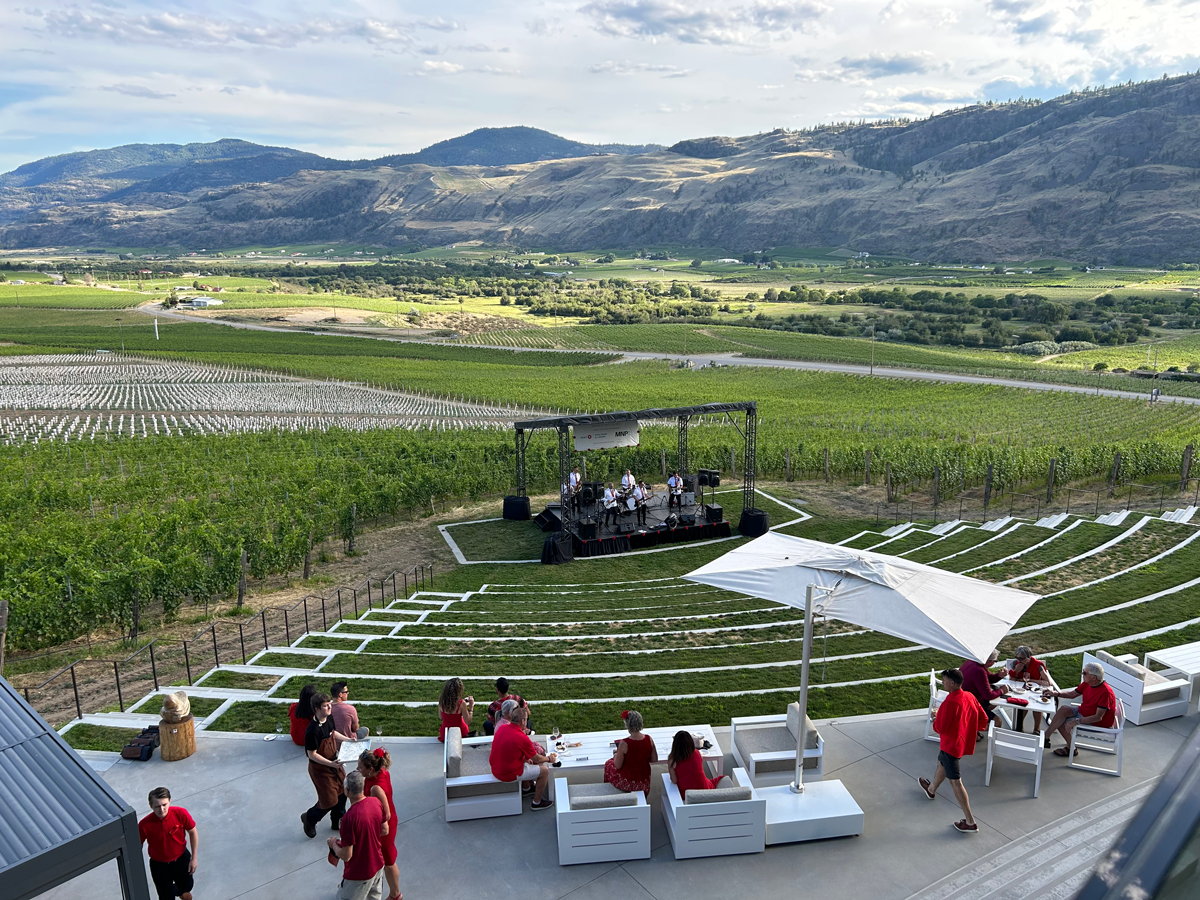
Wine Culture Magazine

Mark Beringer, left, and Olivier Humbrecht pause to sample white wines in the cellar at Phantom Creek Estates. Photo by Tania Veitch
Not long after we meet, Mark Beringer tries to get his friend and colleague, Olivier Humbrecht MW, to admit that he’s a little bored, what with his family making pretty much the same wines in the same place for the last 400 years or so. Humbrecht just shakes his head, smiling.
We’re hanging out at Phantom Creek Estates, the winery on B.C.’s Black Sage Bench where Beringer is director of winemaking, with an affinity for red wines, and Humbrecht is consulting winemaker for the white wine program.
To say that these two men are legends in the industry is an understatement. Beringer is the great-great-grandson of that Beringer, Jacob Beringer, Napa Valley royalty. He was previously, among other things, director of winemaking at Duckhorn Vineyards and chief winemaker at Beringer Vineyards.
Humbrecht, meanwhile, is not only the owner and winemaker of Zind-Humbrecht, which produces some of the world’s best Pinot Gris and Riesling and has been in his family since 1620, he is also France’s first Master of Wine, a champion of biodynamics and president of Biodyvin.
So what are they doing so far from home? They are, of course, making exceptional wine. But they are also having fun exploring what a new region can do. For a couple of memorable days, a few of us got to tag along for the ride.

Chef Alessa Valdez created tiny, gourmet versions of the classic onion tart for Phantom Creek’s Alsatian dinner. Joanne Sasvari photo
It’s mid-July and it’s not only hot, but weirdly humid for the south Okanagan Valley. “Actually, today it is exactly the same temperature in Alsace as it is here,” Humbrecht tells a slightly sticky gathering at the Restaurant at Phantom Creek.
We’re indulging in an Alsatian-themed dinner as envisioned by the talented chef Alessa Valdez, which means perfect little onion tarts, seared foie gras on pain d’épice, Road 17 char with choucroute and spaetzle, truffled Cornish hens and, for dessert, kouglof, a kind of fancy brioche, paired with a luscious 2018 Domaine Zind-Humbrecht Gewürtztraminer.
“To make good wine you need good people. You need the proper climate. And you need good soil,” Humbrecht says. All of these, he suggests, are what he’s found here in Oliver. “I’m not trying to replicate Alsace. I’m not trying to make Alsace wine.”

The tasting in the barrel room featured a range of wines from the delicate rosé to bold cuvée. Joanne Sasvari photo
The next day, we get a better idea of what these two are trying to achieve. François Mateo, the winery’s managing director, who has worked at top wineries in France, Chile and Oregon, describes how their goal is not just to promote Phantom Creek, but to support other independent wineries by putting the entire region on the world map.
But first, they are working to identify what grows best here.
Beringer and Humbrecht lead us on a tour of the winery, from the Kobau Room where Beringer goes over the history of the famous vineyards, through the crush pad with its dazzlingly expensive gear, into the cellar and the famous octagonal tasting room. Under a magnificent golden Dale Chihuly sculpture, we taste through a lineup of Phantom Creek wines while the winemakers explain how the terroir in each of the historic vineyards the grapes come from—Kobau, Becker, Phantom Creek, Evernden—affects their flavour.
“It’s the mix of soils that makes a region unique,” Beringer says, noting that we are standing on a rare mix of tectonic, volcanic and sedimentary soil. One of Humbrecht’s goals is to transform that soil—some of which is so depleted, Beringer says, “even weeds don’t grow”—to biodynamic.
“The biodynamic is not that complicated,” Humbrecht says. “It’s complicated to understand, but it’s not that complicated to put into the ground. What’s really complicated is going organic.” It’s as clear that he has his work cut out for him as it is that he relishes the challenge.

During the Soirée en Rouge, guests gather in the amphitheatre where a band plays with the South Okanagan Valley as its beautiful backdrop.
Joanne Sasvari photo
Our last night is the Soirée en Rouge, Phantom Creek’s signature summer event, where guests decked in crimson finery party throughout the winery. Beringer is unmissable in a scarlet sequinned dinner jacket; Humbrecht casual in a rosy shirt. A band plays in the amphitheatre as we meander throughout the grounds, grazing on gourmet bites and sipping cool rosé in the sweltering heat.
As the guests start to leave, we gravitate to the restaurant patio, where Humbrecht magics up a a magnum of Kobau Cuvée and we chat about wine and family and travel, and what they see for the future of Phantom Creek and the Okanagan Valley. Humbrecht muses about working with Pinot Noir and Chardonnay; Beringer with more Rhône varieties and maybe some Gamay.
Mostly, they are excited to discover what this young region can do.
“It’s intellectually challenging and it makes your brain work,” Humbrecht says. “And I was a little bored.”
Beringer crows: “He said it!” Humbrecht just smiles serenely, and tops up our glasses.

Phantom Creek Estates Riesling
(Black Sage Bench, $33) Apple, lime zest, lemongrass, sweet spice, flinty minerality, petrol.

Phantom Creek Estates Organic Pinot Gris 2020
(Okanagan Valley, single vineyard, club exclusive) Crisp pear, white peach, white floral notes, juicy.

Phantom Creek Kobau Cuvée 2019
(Golden Mile Bench, $80) Ripe black plum, dark chocolate, earth, refined.

Joanne Sasvari is editor of Vitis and The Alchemist magazines. She also writes about food and drink for WestJet and Vancouver Sun, and is author of the Wickaninnish and Vancouver Eats cookbooks.

Joanne Sasvari is editor of Vitis and The Alchemist magazines. She also writes about food and drink for WestJet and Vancouver Sun, and is author of the Wickaninnish and Vancouver Eats cookbooks.
@ Vitis Magazine